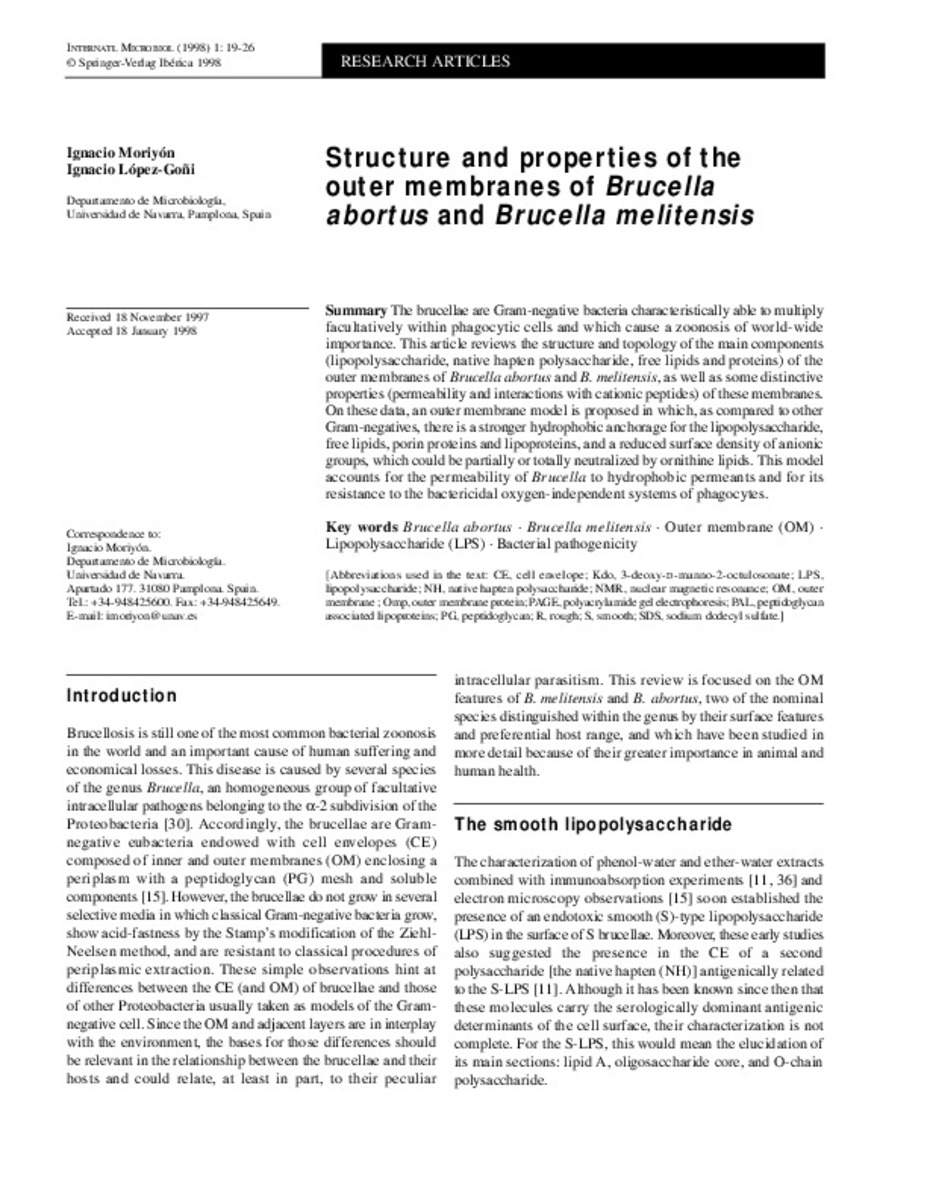Structure and properties of the outer membranes of Brucella abortus and Brucella melitensis
Palabras clave :
Brucella abortus
Brucella melitensis
Outer membrane
Lipopolysaccharide
Bacterial pathogenicity
Fecha de publicación :
1998
Cita:
Moriyon I, Lopez-Goni I. Structure and properties of the outer membranes of Brucella abortus and Brucella melitensis. Int Microbiol 1998 Mar;1(1):19-26.
Aparece en las colecciones:
Estadísticas e impacto
0 citas en

0 citas en

Los ítems de Dadun están protegidos por copyright, con todos los derechos reservados, a menos que se indique lo contrario.







